Last updated December 2024 | Words and photos by Vietnam Coracle | 80 comments

Tom Divers is the founder and creator of Vietnam Coracle. He’s lived, travelled and worked in Vietnam since 2005. Born in London, he travelled from an early age, visiting over 40 countries (he first visited Vietnam in 1999). Now, whenever he has the opportunity to make a trip, he rarely looks beyond Vietnam’s borders and his trusty motorbike, Stavros. Read more about Tom on the About Page, Vietnam Times and ASE Podcast.
Train journeys in Vietnam are more than just a means of getting from A to B: they are an experience. On Vietnam’s railways, travellers get a genuine sense of the country and start to appreciate nation-defining characteristics, such as changes in the landscape, climate, food and accent from one region to another. Unlike taking a domestic flight, train travel is richly rewarding, providing travellers with a social, culinary and cultural experience. Taking the train in Vietnam is nothing like it is in Europe, North America, Japan or China: rail travel in Vietnam is low-tech, slow, informal, and exciting. What’s more, train travel is relatively cheap, comfortable, efficient and easy to book. If you enjoy journeys and the act of travel, you’ll almost certainly enjoy travelling by train in Vietnam.
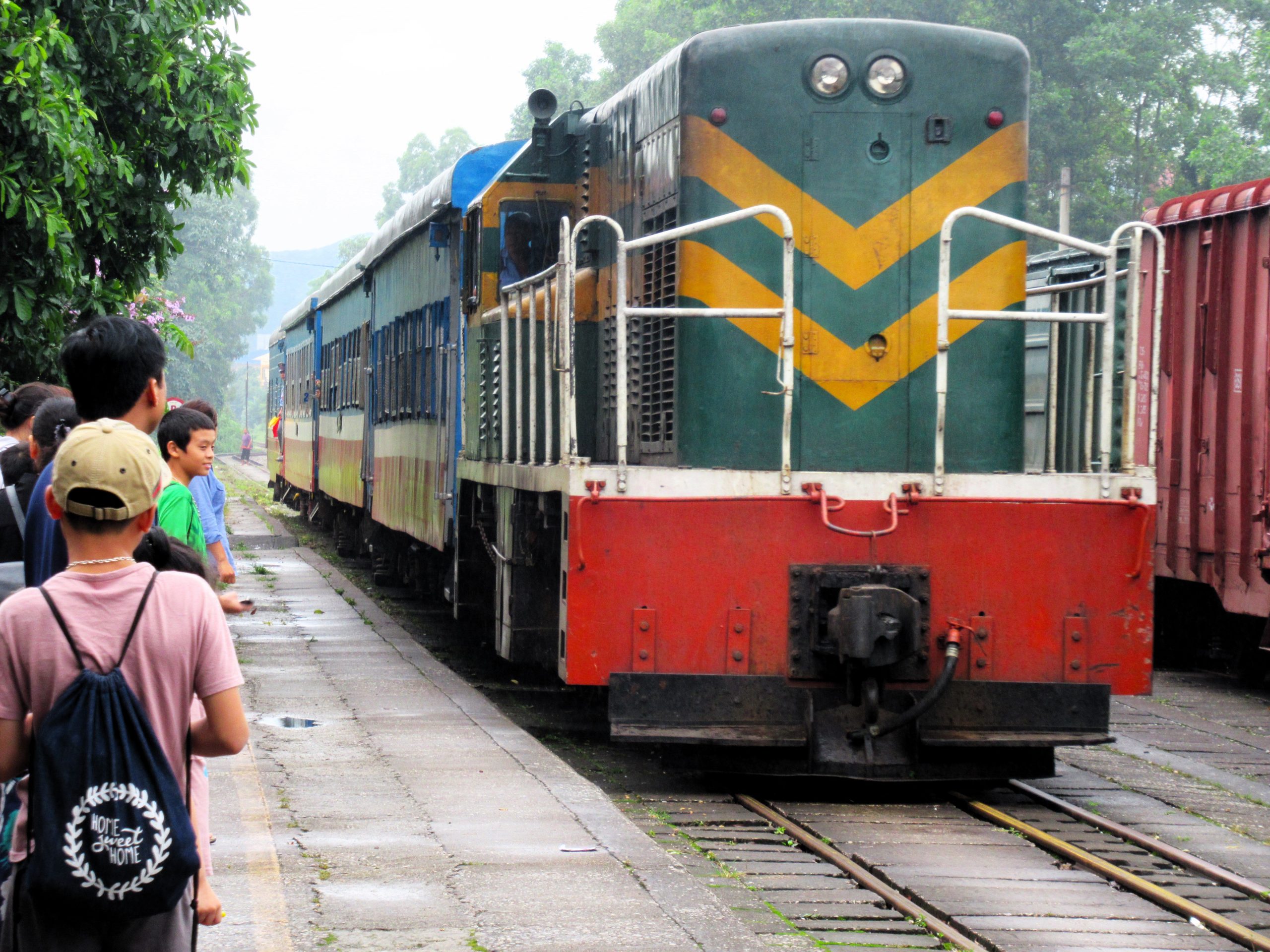
[Back Top]
TRAIN TRAVEL IN VIETNAM
A Guide to Riding the Railways
This guide is intended to provide travellers with a practical overview of how to travel by train in Vietnam and why it’s a rewarding travel experience. I’ve included information about train routes, booking tickets, classes of travel, food and much more in order to paint a picture of what train travel is like in Vietnam. On my map I’ve marked all rail routes and major stations, as well as some of the most scenic sections of track. You can book train tickets directly from this page using the Baolau.com search boxes and links. (For excellent historical information about Vietnam’s railways, read ‘Railways & Tramways of Việt Nam’ by Tim Doling.)
CONTENTS:
MAP:
Train Routes & Stations in Vietnam
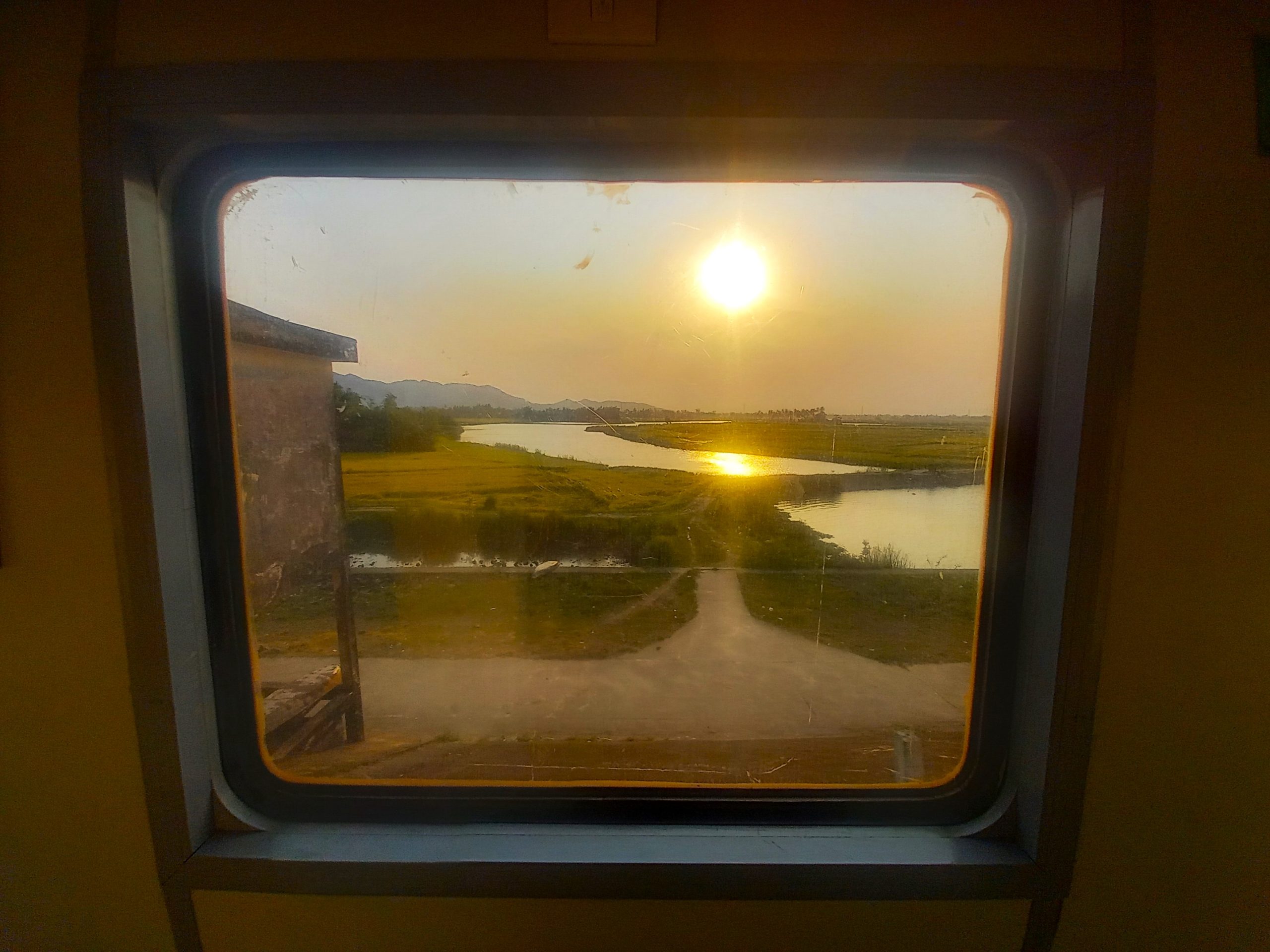

ROUTES & SCHEDULES:
Vietnam Railways operates a main south-north line and several spur lines. There are dozens of potential routes and station stops across the nation: use my train map for an overview. Schedules, times and ticket prices are easy to search, browse and book using the Baolau.com search box below, or vnr.com (the Vietnam Railways website), or at any major train station where the national train schedule is displayed on large billboards.
Reunification Express (Transindochinois):
Vietnam’s main railway line runs from Saigon (Ho Chi Minh City) in the south all the way to Hanoi in the north, stopping at over 20 stations along the way. Roughly following the coast for over 1,700km, the south-north line connects almost all major coastal cities between Saigon and Hanoi (see map). This line is known today as the ‘Reunification Express’, and in French colonial times it was called the Transindochinois. There are at least 6 trains every day in both directions on the ‘Reunification Express’ between Saigon and Hanoi. The journey between the two cities takes more than 32 hours. In addition, several other trains ply specific sections of the south-north main line, stopping at smaller stations as well as major ones. You can easily check schedules, times and ticket prices by using the Baolau.com search box below or vnr.com or at any major train station.

Spur Lines:
In addition to the main south-north ‘Reunification Express’ route, several spur lines branch off to other destinations. These include: Hanoi→Hải Phòng, Hanoi→Lào Cai, Hanoi→Lạng Sơn, Hanoi→Hạ Long, Hanoi→Thái Nguyên, and Saigon→Phan Thiết. However, schedules on these spur line routes are irregular and subject to change, particularly in the post-pandemic period. Check schedules, times and ticket prices using the Baolau.com search box below or vnr.com or ask at the relevant train stations.
*Always book train tickets at least a few days in advance or more if travelling during public holidays or on weekends
SEARCH TRAIN ROUTES & SCHEDULES:

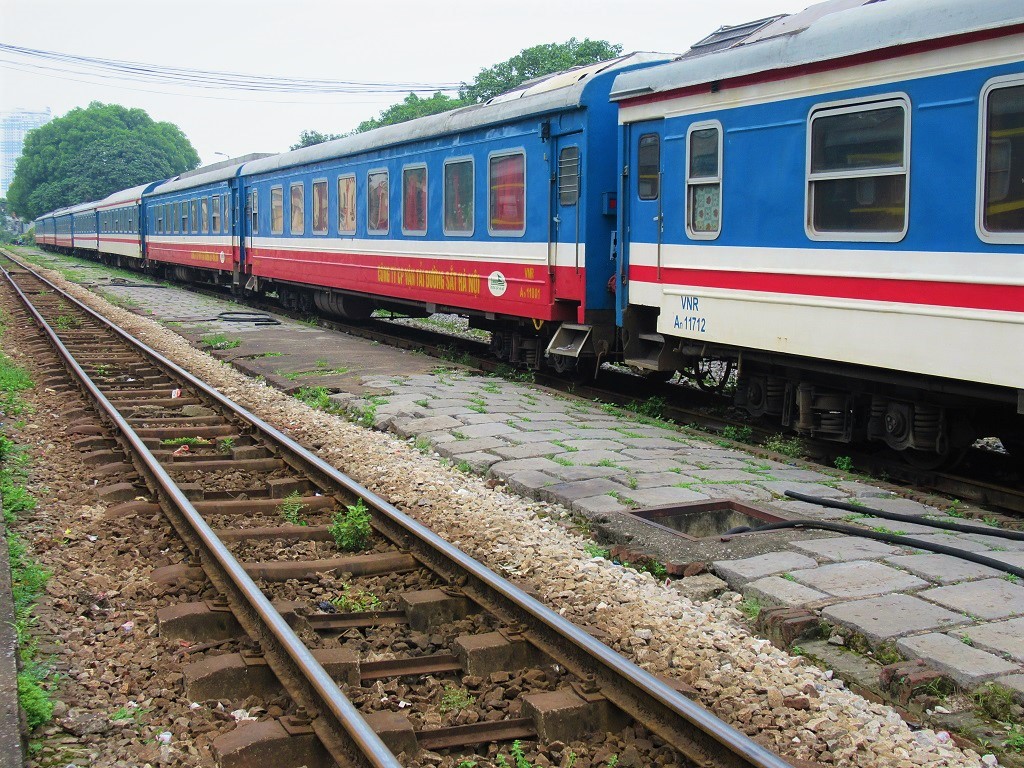
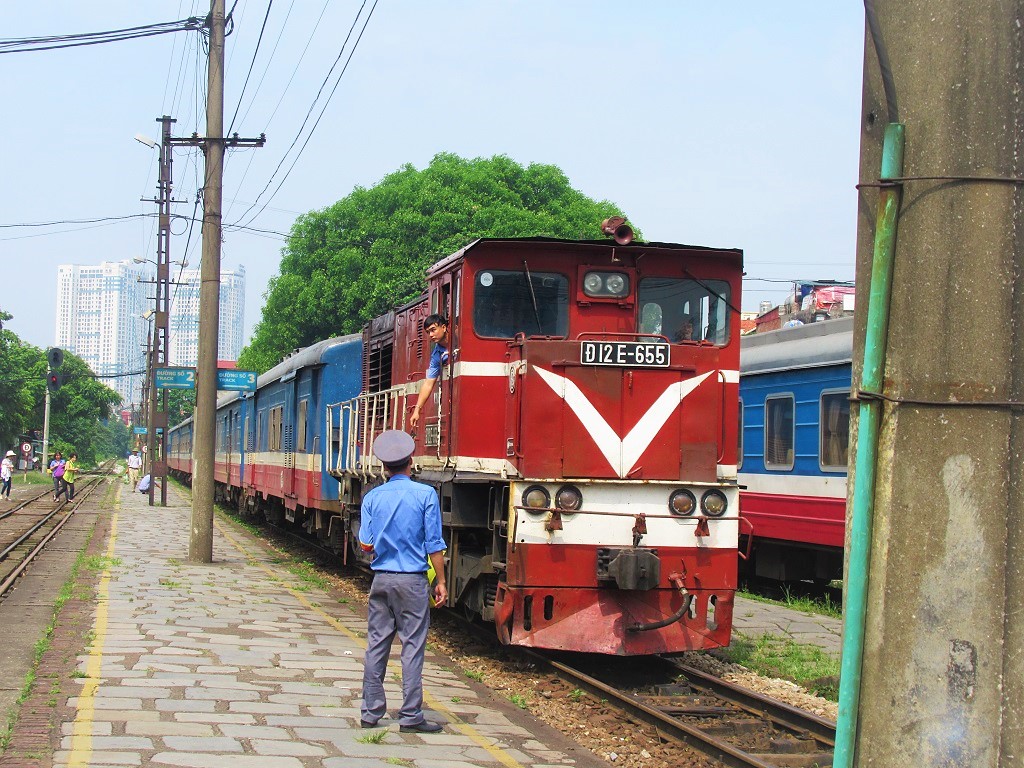
BOOKING TICKETS:
Booking train tickets is now very easy and efficient. You can book tickets directly from this page on almost all train routes in Vietnam by using the Baolau.com search box below. Type in your departure and arrival stations and the date of travel and click ‘Search’. This opens a new page with all train times and prices in all classes for that day and that route. Choose your train time and class then click ‘Book Now’. Next, choose your exact carriage, seat or sleeping birth on the train map, enter your details and make payment online. You’ll receive an e-ticket with a QR code in your email inbox which you can show to station staff on your phone before boarding the train. Your ticket has a carriage number and seat/bed number on it.

Alternatively, you can book tickets in-person at any train station, but not much English is spoken, or you can use vnr.com (the Vietnam Railways website) to make a booking, but their site is not as good or as easy to use as Baolau.com. (Note that there’s a small service charge with Baolau.com, but this is a very small price to pay for the convenience of using their system.)
*Always book train tickets at least a few days in advance or more if travelling during public holidays or on weekends
BOOK TRAIN TICKETS:


SEATING & SLEEPING:
There are 4 ‘classes’ of seating and sleeping on Vietnam’s railways (see below for descriptions and photos of each one). Which class you choose depends on the length of the journey you’re taking and on your budget. Most trains on most routes (even shorter spur routes, such as Saigon→Phan Thiết and Hanoi→Lào Cai) offer both seating and sleeping compartments. As a general rule, seating is fine for daytime journeys under 8 hours, but sleeping compartments are better for night trains or any journey over 8 hours. The 4 classes are:
- Hard Seat (fan)
- Soft Seat (air-con)
- 6-Bed Sleeper (air-con)
- 4-Bed Sleeper (air-con)
SEARCH TRAIN TICKETS:
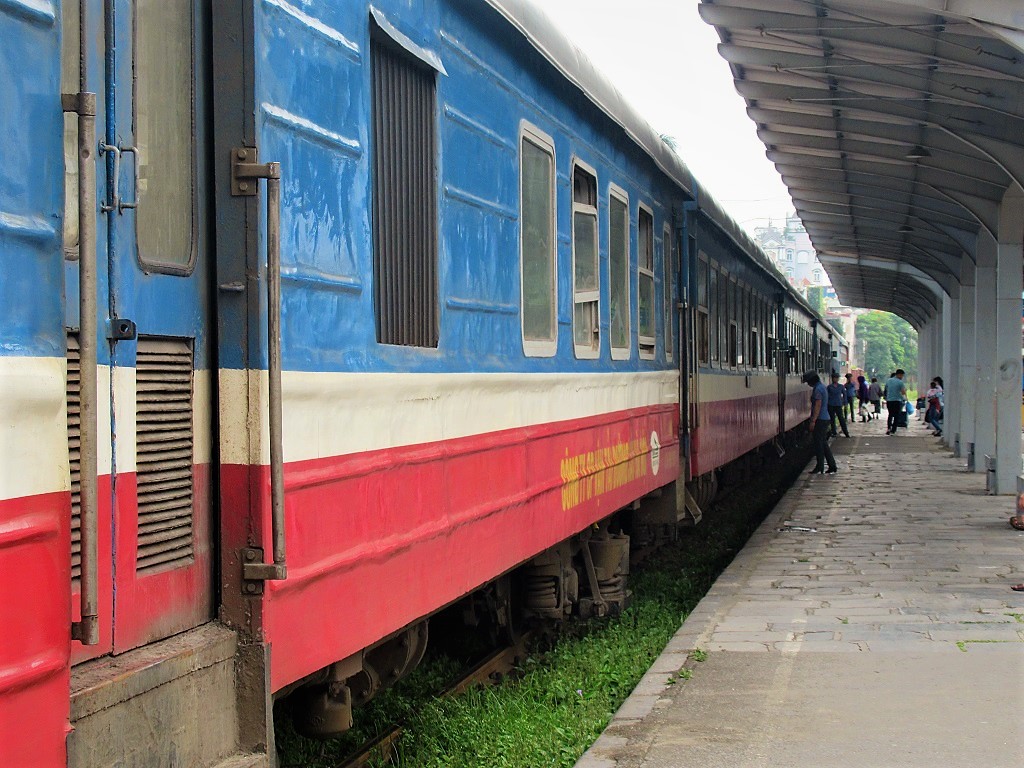
Hard Seat:
Typically the last couple of carriages on a train, the hard seat class is the cheapest and sparsest available on Vietnam’s railways. The wooden seats are absolutely fine for shorter journeys, such as Hanoi→Hải Phòng or Hanoi→Lạng Sơn. But on longer trips the carriages, which are fan-cooled, not air-conditioned, can become stuffy and uncomfortable. However, the ambience is informal and social: families with kids playing in the aisles, picnics on the floors, and chickens in cardboard boxes. On short hops this can be a good experience; on long-hauls it can be a test of endurance.
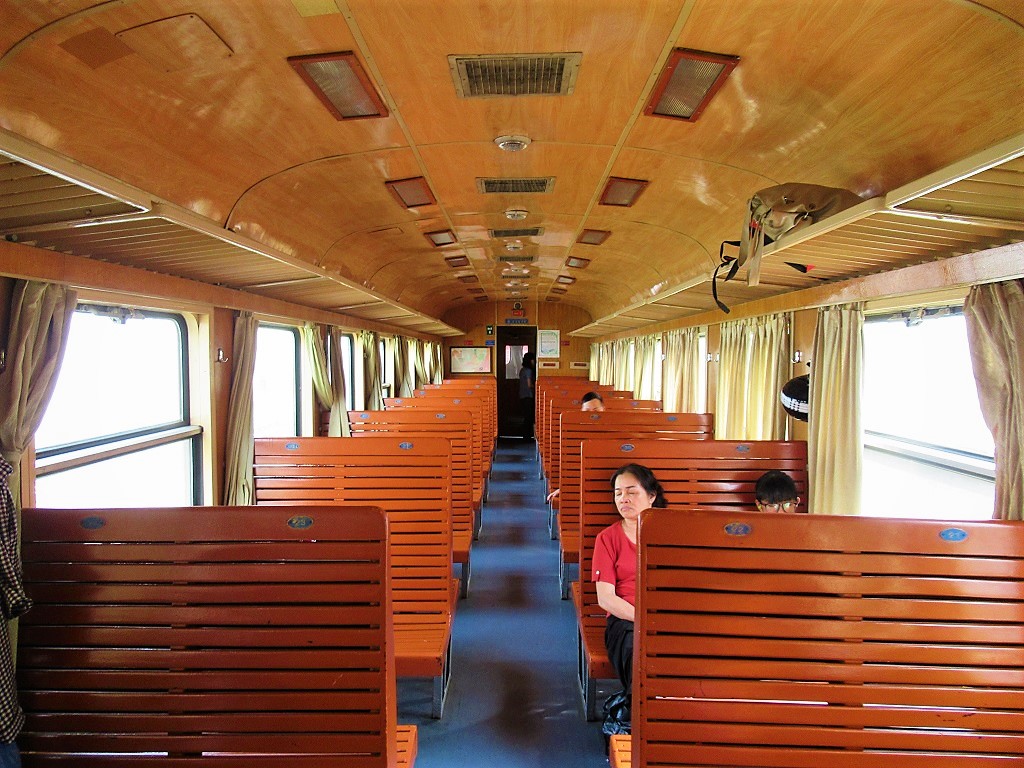
Soft Seat:
Soft, coach-style seating on reclinable chairs in an air-conditioned carriage, the soft seat class is ideal for daytime journeys of a few hours or more. Comfortable, cool, bright and spacious, most passengers will be fine in one of the soft seats for any medium-length journey. The windows are large, the ceilings are high and the air-con is effective. Ticket prices are reasonable and more affordable than sleeping compartments, but if you’re travelling overnight, don’t expect to get too much sleep in a soft seat. For daytime journeys on routes such as Huế→Đà Nẵng, Saigon→Nha Trang, Quy Nhơn→Đà Nẵng, soft seat class is all you need.

6-Bed Sleeper:
Separate air-conditioned compartments of 6-beds connected by a common aisle, this class allows passengers to lie down in comfort, but it can feel a little cramped if all 6 beds are occupied. The beds are arranged in two rows of bunks. Try to avoid taking the top bunk bed, which has very little space between the bed and the ceiling and can be mildly claustrophobic on long journeys. On night journeys, the middle bunk is best for sleeping, but on day journeys, the bottom bunk is best for comfort, because you can sit-up or lie-down and see out of the window. In my opinion, 6-bed sleeper class is good for shorter overnight journeys, such as Hanoi→Lào Cai or Saigon→Nha Trang. There is also good potential for social interaction as you are sharing quite an intimate space with 5 other passengers. Clean linen, a blanket and a pillow are provided.

4-Bed Sleeper:
The most comfortable class on Vietnam’s trains, these sleeper compartments have 4 beds in a private cabin arranged in two rows of bunks. The beds are comfy, the air-con is powerful (bring a sweater), there’s plenty of space on the top and bottom bunks, and it’s a cozy place to be for a long rail journey. Clean linen, blankets and pillows are provided, there’s a power outlet and USB charger for electrical devices, and each bed has its own reading light. Although the bottom bunk is slightly more expensive, if your main concern is sleeping, you should opt for the top bunk. This is because when your head is on the pillow on the bottom bunk you can hear and feel every bump on the tracks. My advice is: on a long night train, book the top bunk and enjoy a decent night’s sleep; for long journeys during the day, the bottom bunk is better for looking out the window, sitting at the table and working on your laptop. For long-haul rail journeys in Vietnam, such as Saigon→Đà Nẵng, Hanoi→Huế, or Saigon→Hanoi, the 4-bed sleeper class is by far the most comfortable and romantic.
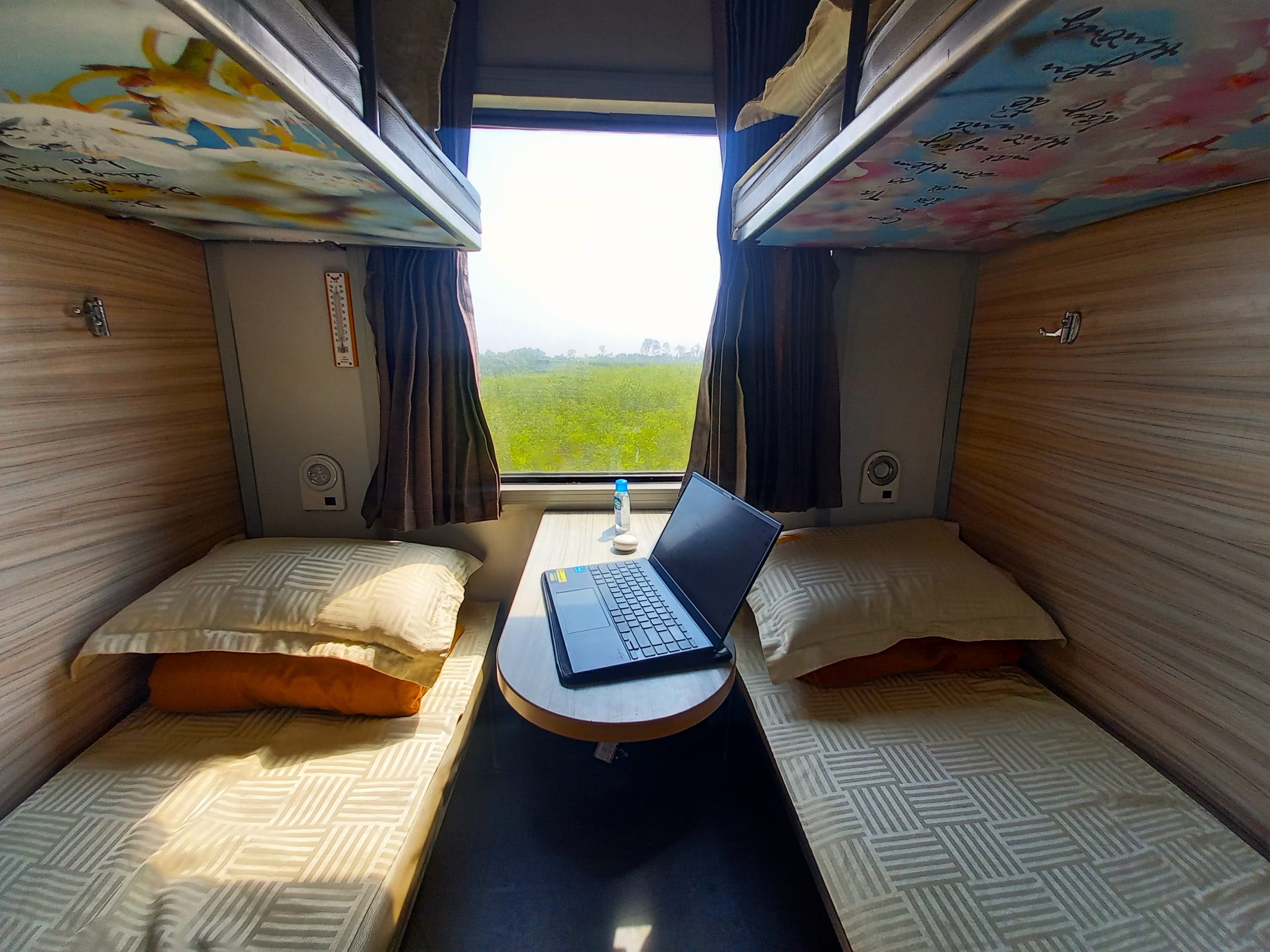
FOOD & DRINK:
Eating and drinking on Vietnamese trains is nothing like it is on European or North American railways. Vietnam’s dining culture is sophisticated, regionally diverse, highly social, affordable, and oftentimes very informal. This is as much the case on the railways as it is in normal, everyday life. Most trains have a dining car (usually towards the back on the train), food and drink trolleys which regularly ply the aisles in all classes, and a hot water dispenser at the end of every carriage. In addition, passengers are allowed (and the majority do) to bring their own home-cooked picnic food onboard for the journey. If that weren’t enough, vendors board trains at stations, walking up and down carriages shouting their wares – hot, local specialities – for a brief few minutes before the train departs. Finally, all stations have at least one coffee shop, a convenience store and food outlet.
As is the case in most culinary contexts in Vietnam, travellers with an adventurous palate, few dietary quibbles, and an open mind will get the most out of their dining experience on Vietnamese trains. Leave your preconceived ideas of dining etiquette, cleanliness and ‘morality’ at home.
There are several ways to eat and order food on trains. If you bring your own picnic, you may consume it at your seat or sleeping birth, but not in the dining car. The dining cars (some of which are fairly grimy) only seat about a dozen passengers and they can become quite rowdy and cramped at mealtimes. However, there’s something undeniably romantic about railway dining cars. Sit down and order a drink (coffee, soda, beer), a snack (hard boiled eggs with salt and pepper, fresh green, sour mango) or a meal (hot phở or hủ tiếu noodles or steamed rice with stir-fried vegetables, meat, fish and soup) and watch the landscape roll by.
Alternatively, wait for the meal trolleys to reach your seat or sleeping compartment. Fresh rice meals (cơm) are served from a large ‘hot trolley’, including a huge vat of piping hot steamed rice and half a dozen dishes to choose from. These are all on display, so passengers can easily point and order. Typically you’ll find the following dishes: stewed pork (thịt kho), marinated pork cutlet (sườn), pork rolled in aromatic betel leaves (chả lá lốt), fried fish (cá chiên), and fried spring rolls (nem rán). Prices are 50,000-100,000vnd ($2-$4) per meal. Although there aren’t really any vegetarian or vegan options, you can try saying Tôi ăn chay (I’m vegetarian). All the food is freshly cooked, unlike the factory-prepared, vacuumed-packed items sold on UK trains, for example.
In addition, regional specialities are loaded onto the train at different stops along its route and then sold to passengers. This is a remarkable, unique, endearing and very Vietnamese aspect of railway dining. Some examples are: steamed whole corn on the cob at Long Khánh station from the fields outside your window; wonderfully exotic dragon fruit at Bình Thuận station from the plantations you can see from the train; bánh nậm (delicate steamed rice cakes) at Huế station; and nem chua (delicious cured pork sausages) at Thanh Hóa station.
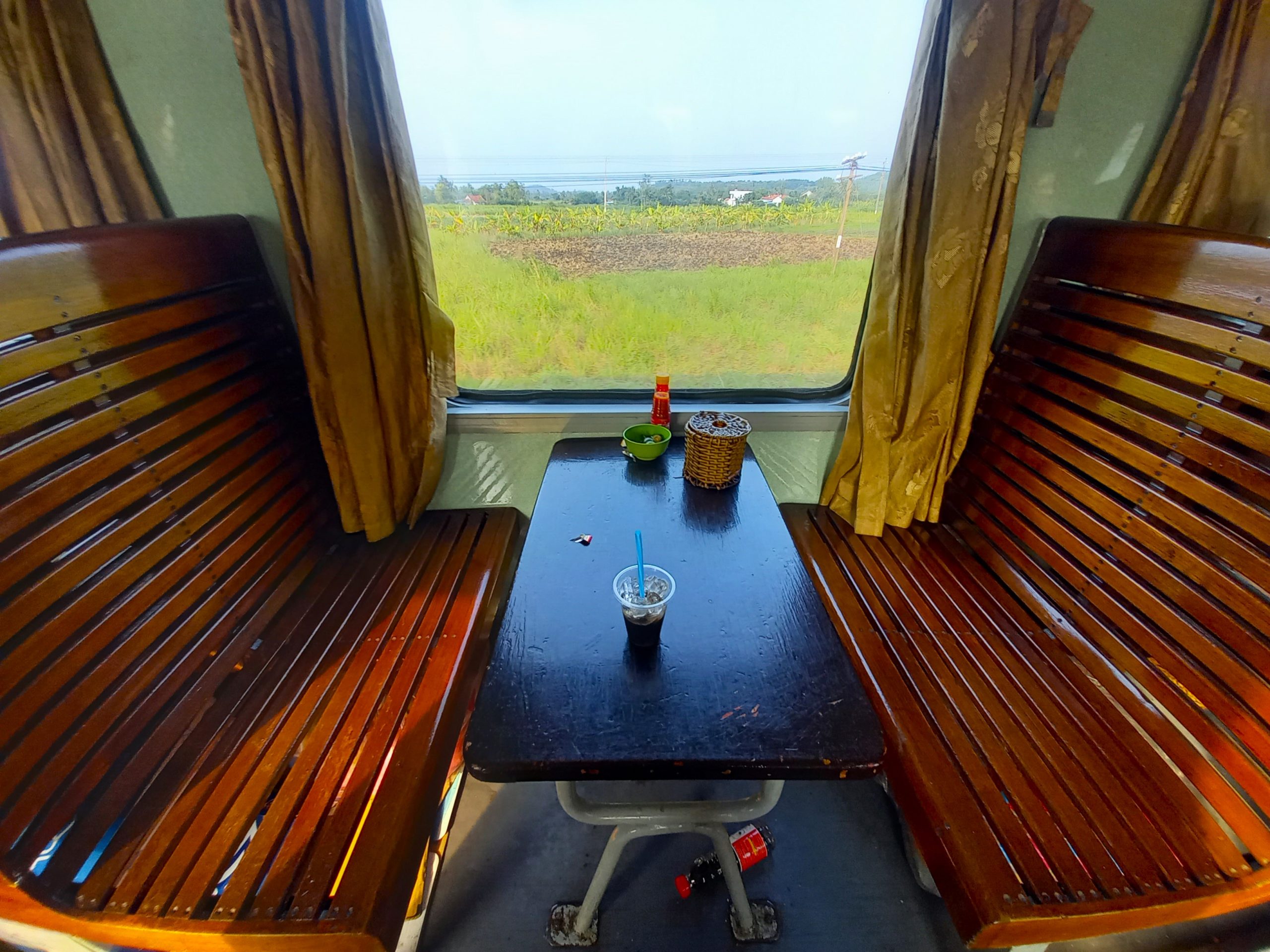
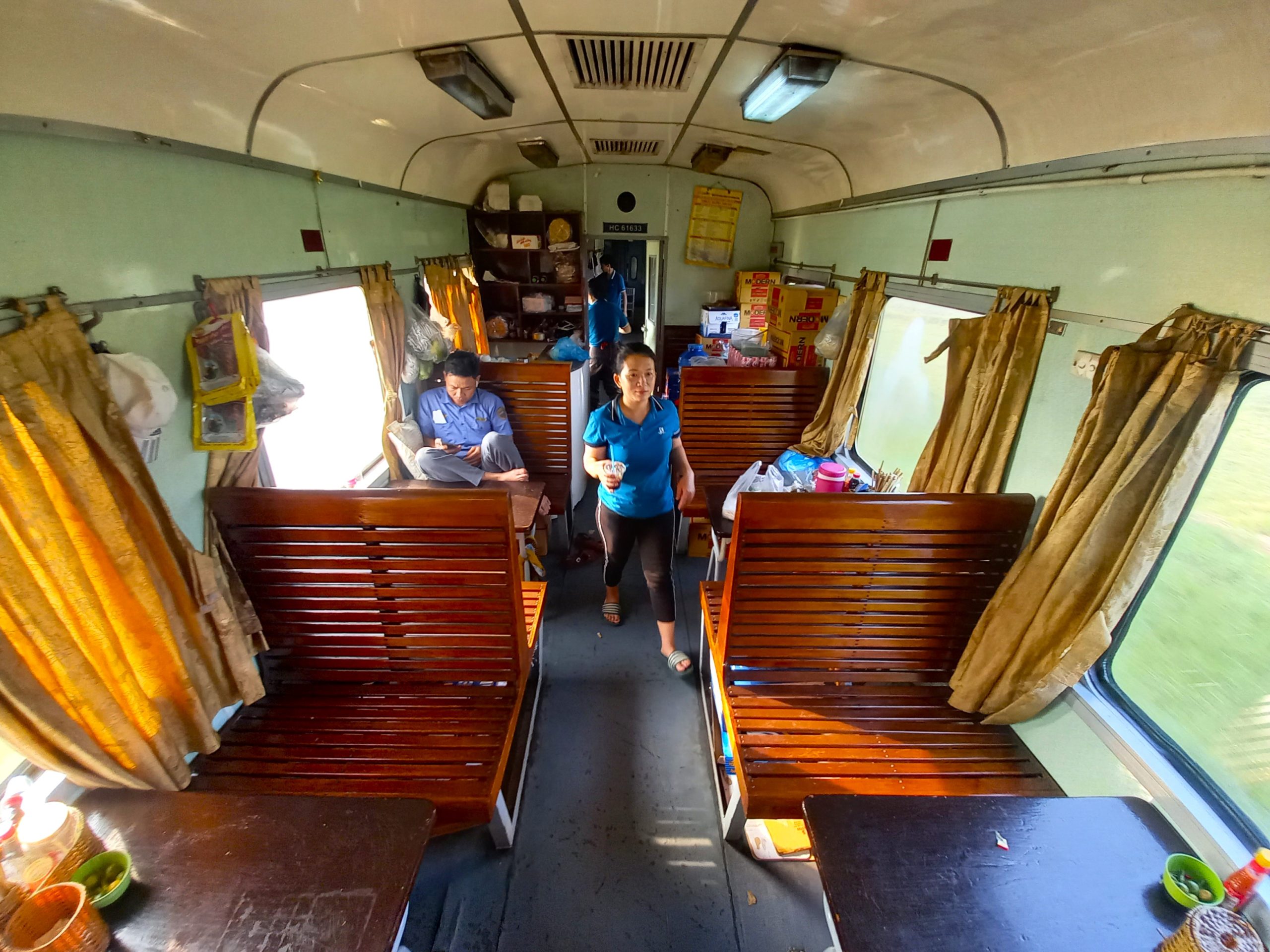
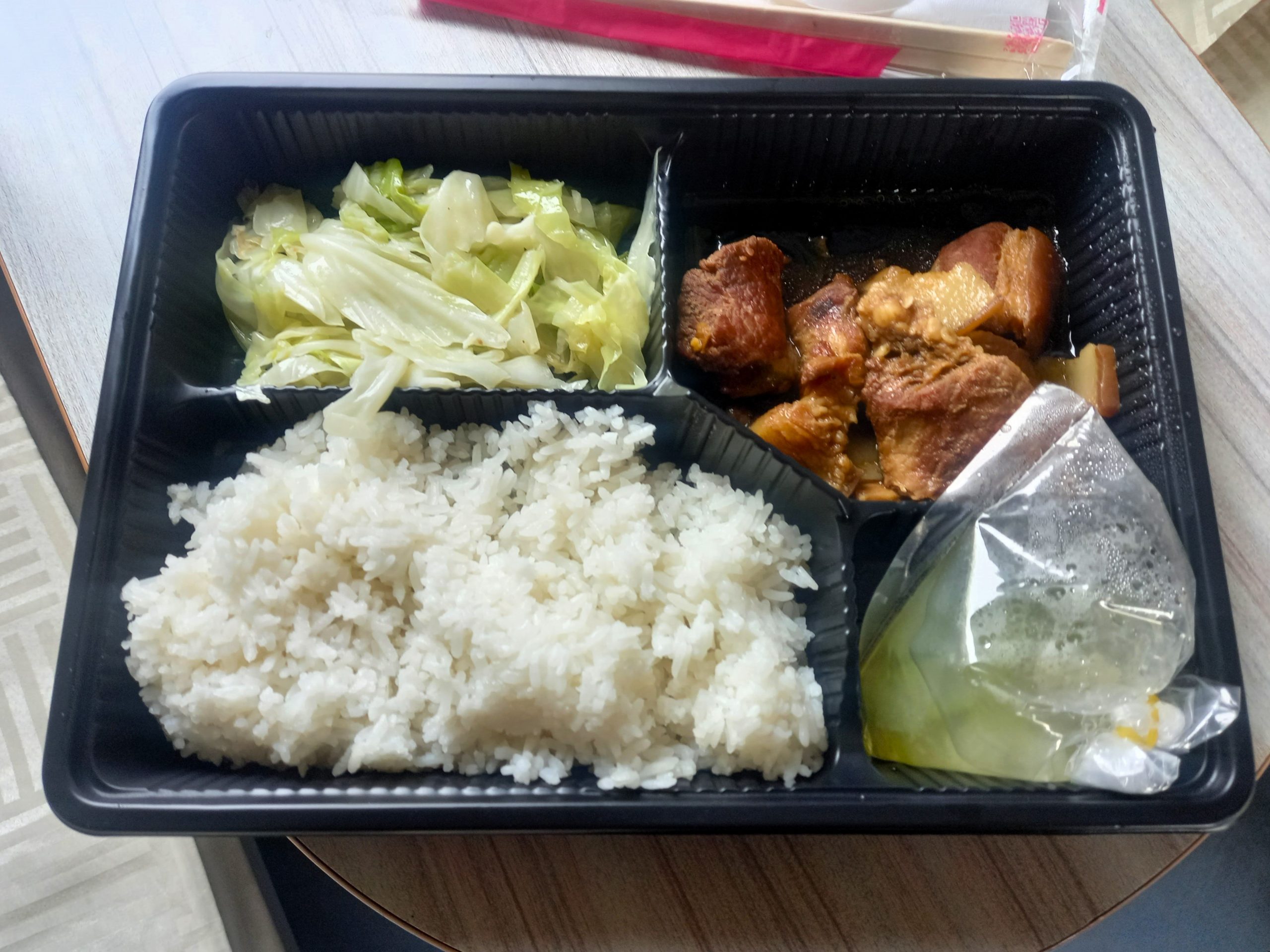
THE TRAINS:
Trains on the main south-north line between Saigon and Hanoi are large and long, usually 10-15 carriages in length with capacity for several hundreds of passengers. Trains on spur line routes are generally shorter, sometimes only 3-4 carriages in length, depending on the route. The trains are pulled along the rails by enormous diesel locomotives resembling the ones you might see in an old Soviet propaganda poster. I don’t know enough about trains to name or date the carriages and engines, but I suspect they’re not particularly modern; many are probably reused carriages from old Chinese and Russian trains, but that’s only a guess.
The carriages, painted white, blue and red on the exterior, are wide, high and spacious and the level of cleanliness is acceptable, if not exceptional. Most of the carriages are functional and coach-like, but sometimes they can be cozy and very comfortable. Some of the dining cars are romantic-looking wooden compartments, like something from the U.S. Pacific Railroad in the 1870s, but others are bleak and utilitarian in appearance. The dining car tends to become the train’s ‘pub’ on long journeys: loud, drunk men, cigarette smoke and a boisterous atmosphere.
Toilets vary considerably from carriage to carriage, regardless of what class you’re in, so it’s worth walking up and down the train to find the ones in best condition. There are both ‘sit-down’ toilets and ‘squat’ toilets. Wash basins are located at the end of each carriage and are fine for washing hands and brushing teeth.
Staff range from young twenty-somethings to old, weathered-looking ‘lifers’, who’ve been working on the rails for 40 years. The railway is state-run and I would guess wages aren’t high, nor is it a glamourous job. It shouldn’t be a surprise, therefore, that some staff, particularly older ones, can be rather brusque with foreign passengers. However, smiling and patience go a long way in Vietnam and I’ve met some remarkably kind, gracious and helpful staff on Vietnam’s trains. The general level of ‘customer service’ is informal, polite and well-meaning.
BOOK YOUR TRAIN JOURNEY:
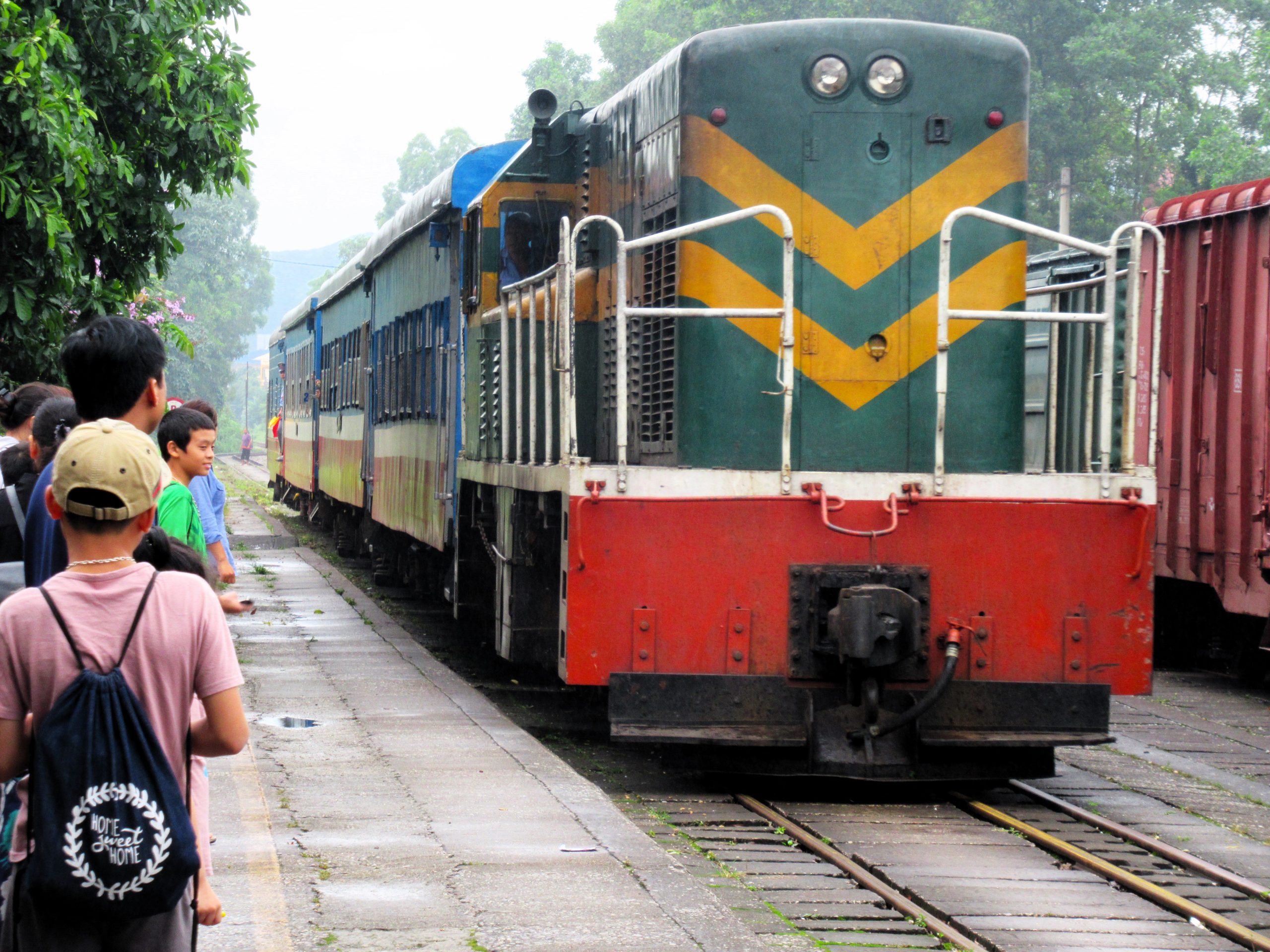
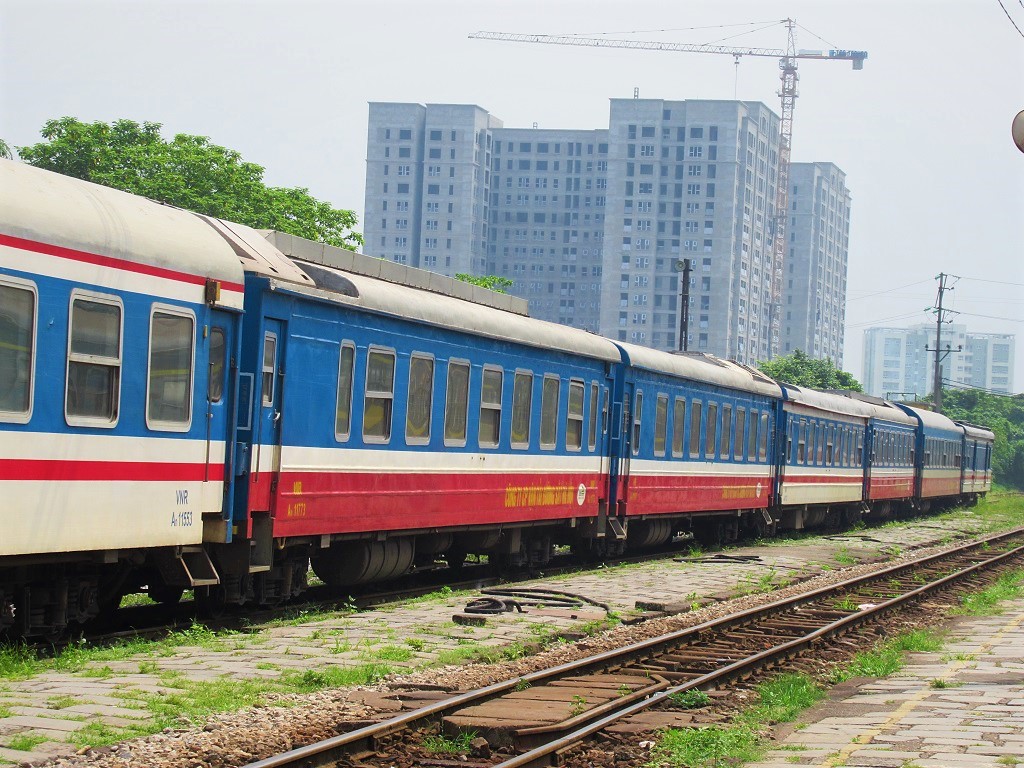
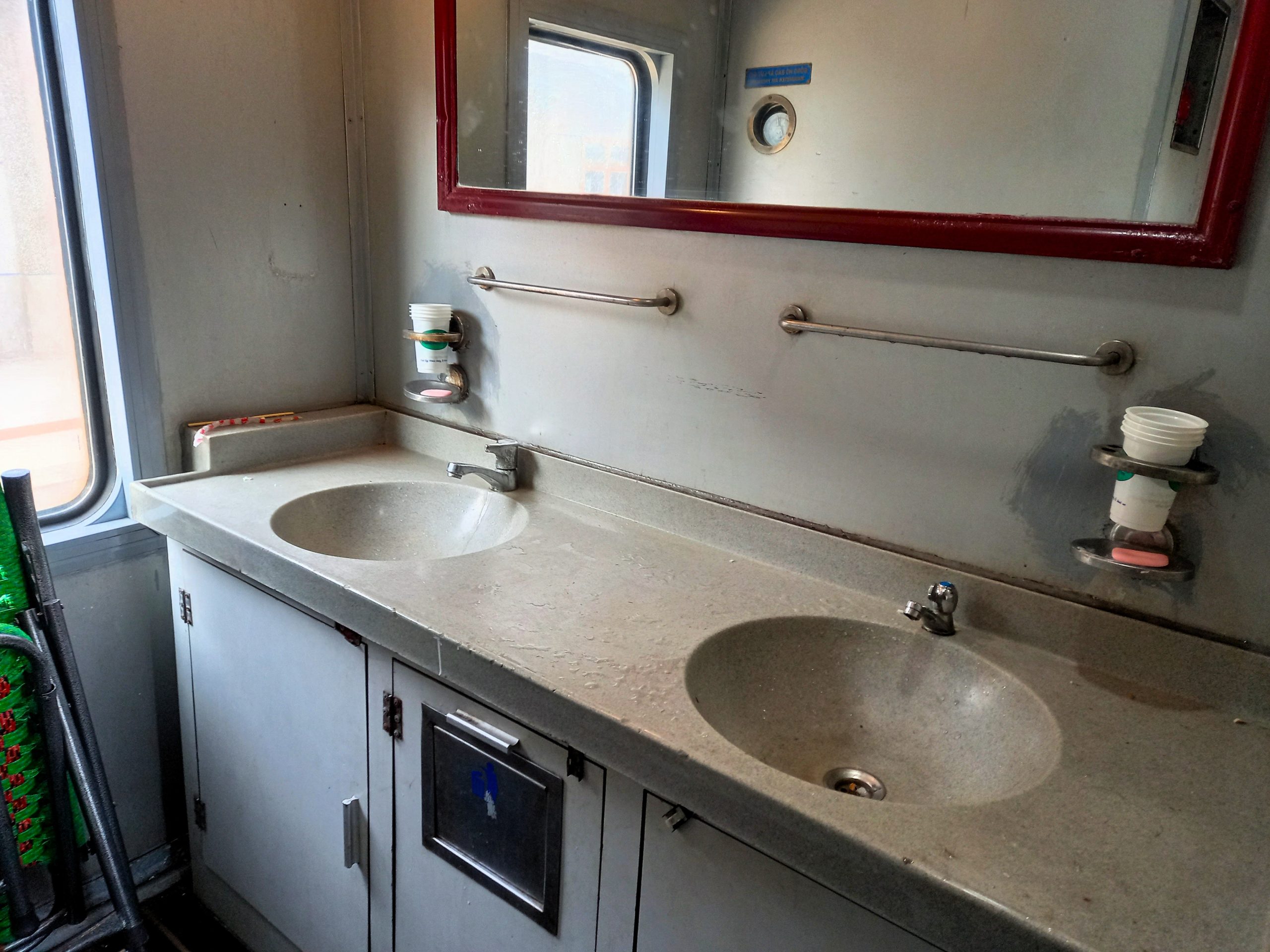
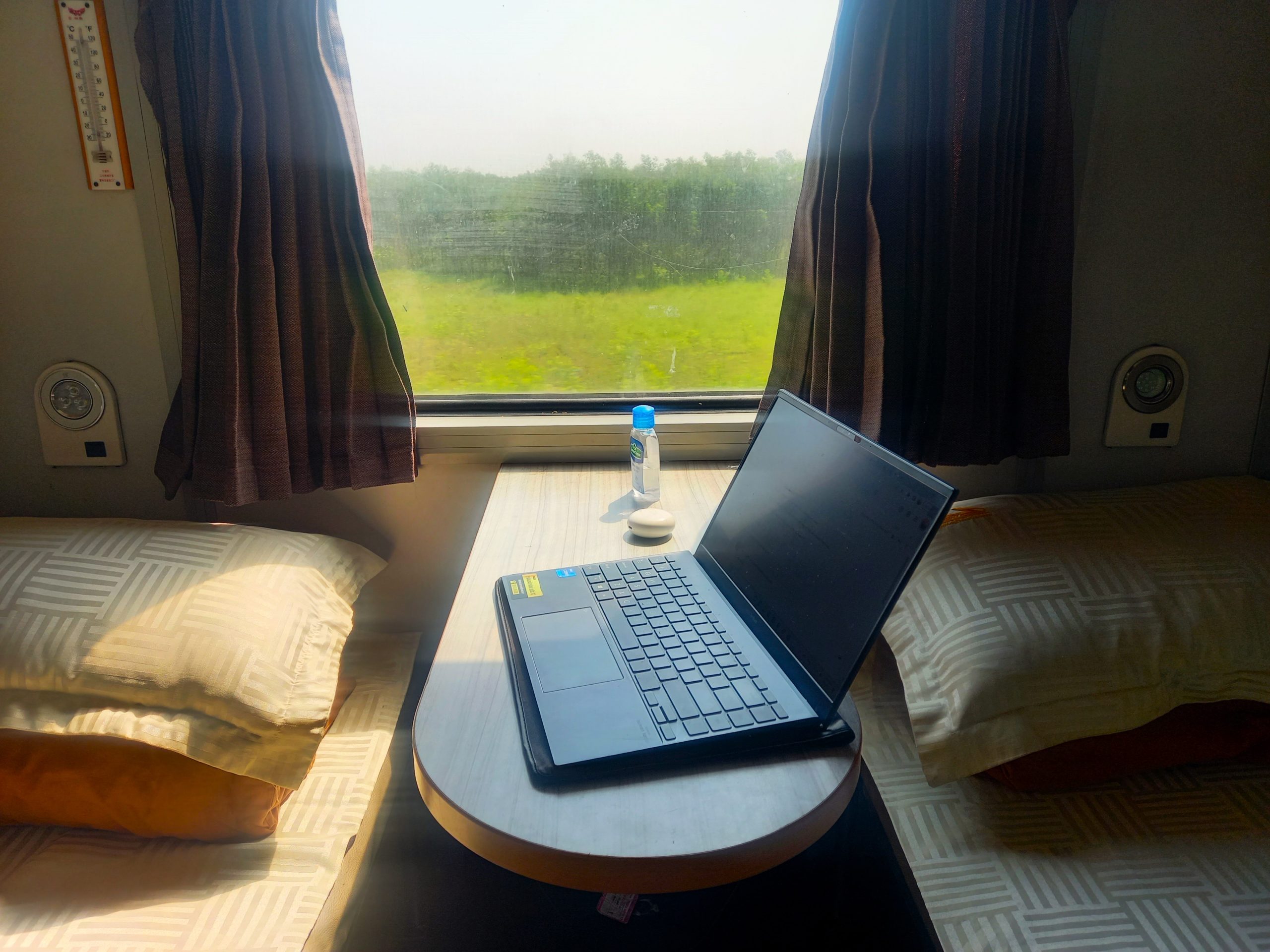
THE JOURNEY:
Departing from train stations in Vietnam is always exciting, but particularly on early morning departures or night trains. There’s an atmosphere on the platform: the sound of the locomotive humming as if steeling itself for the long journey ahead; the flow of people through the station entrance and into the carriages; the sense of expectation; the hoot of the horn before departure; and the slow, grinding shift of motion echoing from carriage to carriage as the train crawls out of the station. Moving through the city at processional speed everything stops to let the train by, watch it go, honour it as it passes: traffic on the city’s busy arteries comes to a standstill at level crossings, pedestrians look up from their meals, stop their work, look out of windows trying to catch a glimpse of the train as it parades by.

Unlike highways, the railway passes through rural areas without anything between the track and the landscape. On the south-north main line in particular, because of Vietnam’s unique geography with the coastal plains to the east and the Trường Sơn Mountains to the west, the scenery is often sublime. There are moments when the track echoes the coast and the train comes within metres of the ocean; at other times, the railway detours inland through bright rice paddies with purple mountains looming behind. On long train journeys in Vietnam you get a real sense of the size, scale and topography of the nation. The train travels at just 50-80kmph – an ‘understandable’ speed – which allows you to study the landscapes in detail. Whether lying in your sleeping birth gazing out the window at an ocean vista, sitting at a wooden table in the dining car with a coffee as a monsoon shower passes over the train, or reclining in your seat staring at a waterway winding into the mountains, there’s some sensational scenery to be seen on Vietnam’s railways.

Train travel in Vietnam can be a social experience, even if travelling alone. Sharing a sleeping cabin for many hours with several strangers is an inherently intimate situation which lends itself to social interaction with your fellow passengers. I’ve met people on Vietnam’s trains many times. One of the endearing qualities of Vietnamese life is the informality of social situations. The train is no different. Children play in the aisles, teenagers huddle on top bunks with their phones, business people tap away at their laptops, extended families of eight people bundle into 4-bed compartments for a picnic lunch of grilled chicken and sticky rice, while older men stand in the narrow gap between carriages puffing on cigarettes. The charm and social cohesion you often see and experience with Vietnamese street life also takes place on Vietnam’s railways.

Taking the train in Vietnam is much more than a means of transportation: it’s an experience, and one which, for travellers, can begin to illuminate aspects of Vietnamese life and culture. From the landscapes outside the window you get an impression of the terrain and geography of Vietnam; from the passengers that come and go from your cabin you get a sense of different regional accents; from the local speciality food sold on the train at different sections of the route you get an idea of the culinary diversity of Vietnamese cuisine; from the weather – the sun that bakes the carriages, the rain that lashes the train – you begin to understand Vietnam’s complex climate from southern to central to northern regions; and you even get a sense of history from the French colonial-era stations, the Cham temples at Tam Kỳ and Diêu Trì, and the multitude of pagodas and churches you see along the way. All this is in addition to the universal magic of travelling by train, such as lying down in your bunk bed and being rocked to sleep by the rhythmic rattle of the rails and occasional howling of the horn in the night.
BOOK A TRAIN JOURNEY IN VIETNAM:
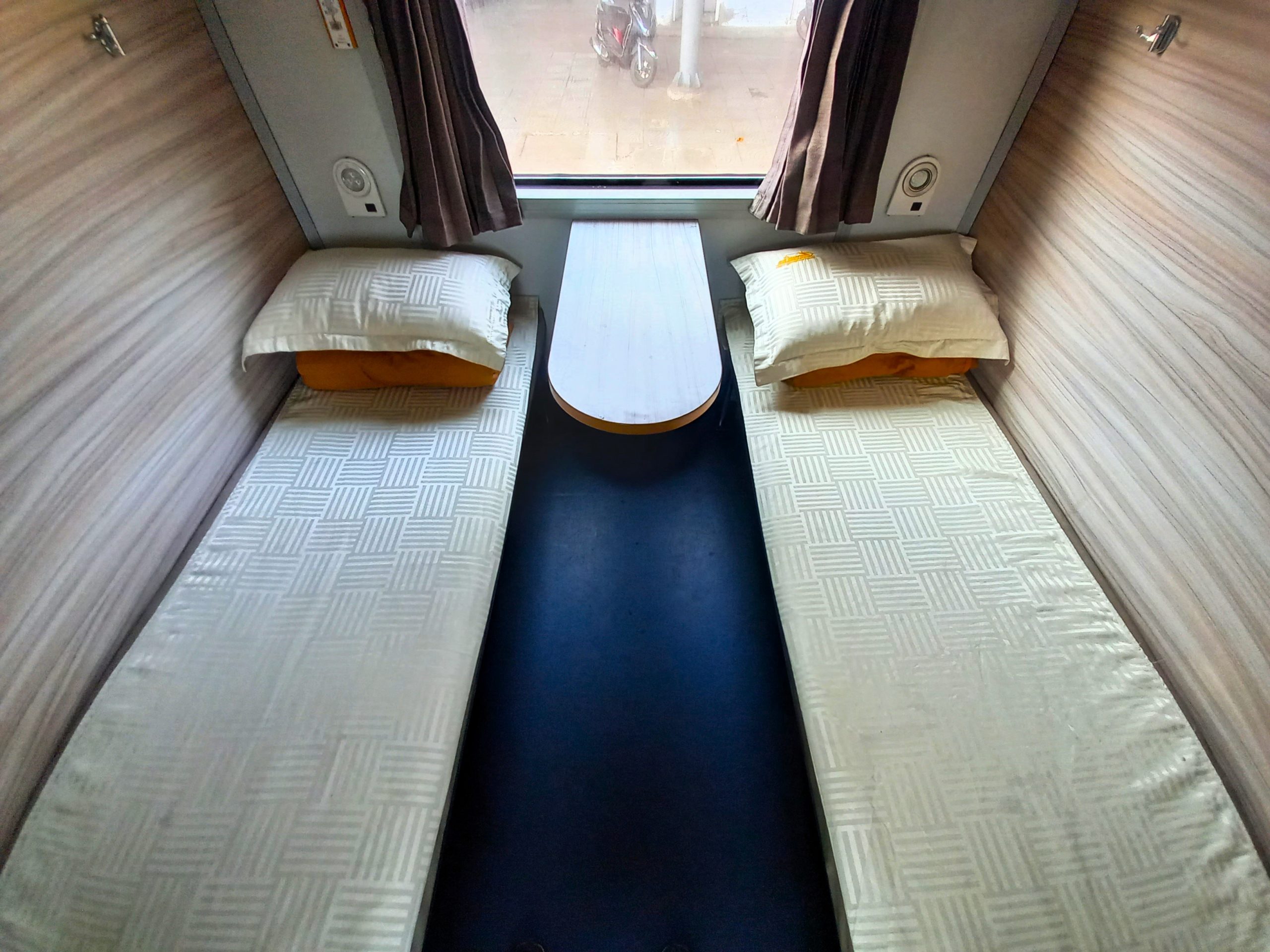
*Disclosure: I never receive payment for anything I write: my content is always free and independent. I’ve written this guide because I want to: I like train travel in Vietnam and I want my readers to know about it. For more details, see my Disclosure & Disclaimer statements and my About Page

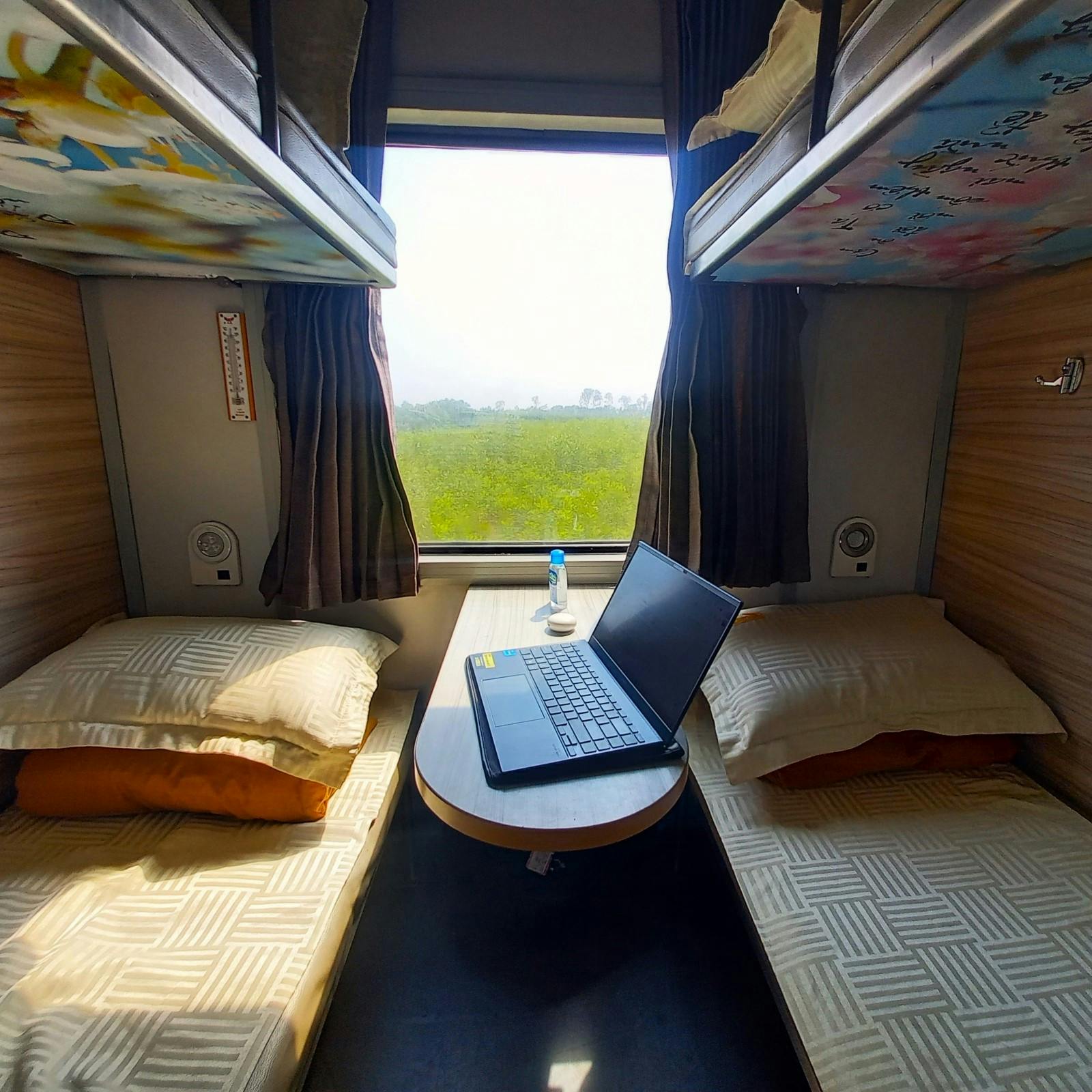
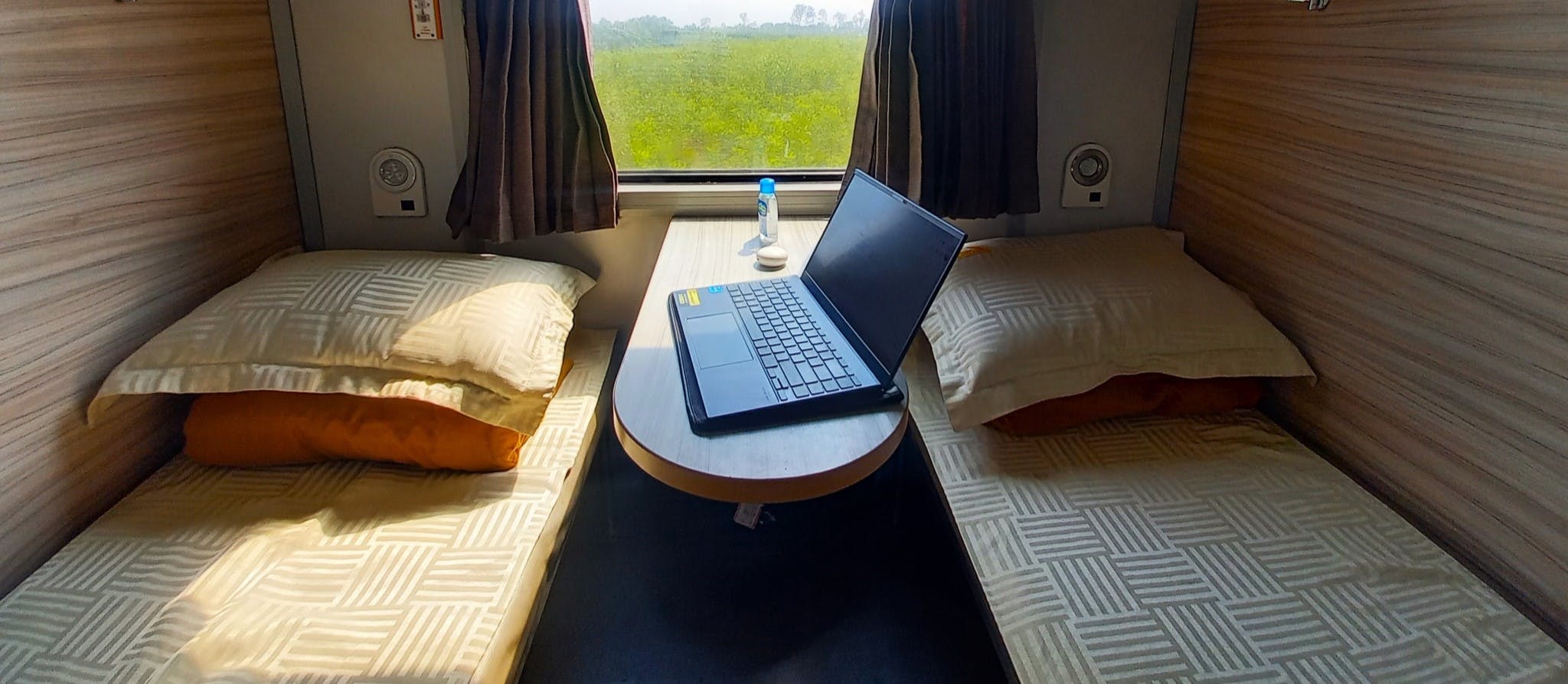


Hi Tom
Just dropping you a line to say how fabulously useful and informative is the info you have provided for first timers to Vietnam train travel. We are planning our trip for October this year and to have such in depth independent advice and information so well laid out is invaluable. Thanks for the time and effort you have obviously invested in putting this together.
KR
Phil
Hi Philip,
Thanks so much for your kind words. I hope your trip in October will be a memorable one.
Best,
Tom
I have searched everywhere but non of information mentions the different carriers and which is better / cleaner. We are traveling from Ho chi min to Hanoi and want to know which carriers allow stop to get off and maybe stay overnight and catch the train the next day or do you have to do the entire trip.
Hi Lisa,
Vietnam Railways is state-owned, so all the ‘carriers’ are the same. You can choose which ‘class’ you want to travel in – see Seating & Sleeping for details.
Alternatively, you can book onto a ‘private’ carriage, such as Lotus Trains, which just add a luxury carriage to one of the ordinary trains.
In addition, as mentioned in other comments, Vietnam Railways does not yet offer tickets that allow you to jump on and off at different stations. Instead, you need to book separate tickets for each leg of the journey.
Best,
Tom
Thank you so much for the clarification!
Thanks for your information
Id like to have a hard copy schedule of the trais
Hi Jose,
For links to the train schedule, please see the Routes & Schedules section in the guide above.
In addition, if you want a full, specially designed PDF of this train guide and map to accompany your travels in Vietnam, you can purchase the Offline Guide & Map.
Best,
Tom
Thanks, your writing style seriously does get the imagination going. I really enjoy train journeys, and you have triggered my imagination.
Tuy Hoa to Da Nang tomorrow day time, really looking forward to it.
😀
Hi Alastair,
Thank you and I hope you enjoy your train journey between Tuy Hoa and Da Nang 🙂
Best,
Tom
Hi
Are 2 people able to book a 4 berth cabin and pay for 4 tickets to ensure they will be by themselves
Cannot seem to find any 2 berth cabins
Thank you
Hi Nicky,
They are only a few 2-berth cabins on just a couple of trains, so they are often fully booked.
Regarding booking a 4-berth cabin for 2 people, I understand the temptation, but personally I don’t advise it. Several people have asked about this before. For example, you could look at the comment and reply to John Pearce below.
Best,
Tom
Hi there,
Yesterday I made a mistake and I’m wondering what your thoughts are. I needed to book an overnight train from Hanoi to Dong Hoi. I found the Vietnam Railway Online Booking and thought it was the direct source. Instead, I paid double and they told me after I paid that my 3 year old (who I paid for even though he’s supposed to be free 🤣) doesn’t get his own bed. Plus, i apparently booked the train provider with the lowest reviews interms of confort. What would you do?
Hi Dani,
Sorry to hear that. I can’t really offer you any advice other than to contact the booking company directly to ask for a refund for your 3 year old. Or a full refund and then book again using the links and sites suggested on this page above.
And in terms of the train provider, unless you booked onto a private ‘luxury’ carriage, all trains are operated by Vietnam (state-run) Railways, so that doesn’t make much difference.
Best,
Tom
Hi Tom
Thanks for the posts.
We’re looking at travelling from Ho Ching Ming to Da Nang over night with 3 kids, 10 – 14yrs. 5 of us total. And possibly up to Ha Noi as well to break the flight travel up.
Is there a train you’d recommend for a bit more of a comfortable sleep space?
And how early would we need to book?
TIA
Scott
Hi Scott,
For the booking process, please see this section of the guide above, and for the types of cabins/seats, please see this section. (All trains have the same classes of cabins/seats)
Best,
Tom
Hi, am planning to spend a week travelling from Danang to Hanoi by Train – any recommended stops after Hue?
Hi Graeme,
Between Danang/Hue and Hanoi the most interesting/popular spots would Dong Hoi, and Ninh Binh. Vinh would be another option.
Best,
Tom
G’day Tom,
Many thanks for your amazing blog.
It seems to cover a lot of what my wife and I intend to do during our upcoming travels.
Arriving Ho Chi Minh late March and leaving from Hanoi early May, we intend to backpack our way from South to North, experiencing as much of Vietnam, Cambodia and Laos as possible.
Do trains connect between the 3 countries?
Is it practical to cross borders multiple times ?
Can a rail pass be purchased for multiple stops or is it best to purchase each leg when needed ?
Kind regards,
Mark
Hi Mark,
There are no trains connecting Vietnam to Cambodia or Laos. And, although it would be a good idea, there is currently no rail pass for Vietnam railways – you just book each journey separately.
Best,
Tom
I am looking at making the trip HCMC to Saigon but I don’t want to spend more than 30 hours on a train nor do I wish to spend 8 days on the luxury trains. Which two towns would you suggest for a stop over? Ron
Hi Ron,
Well, there are many options. For beach towns, I would suggest Nha Trang and Quy Nhon (Dieu Tri station); for cities and culture, I would suggest Da Nang and Hue.
Time of year might also be an important consideration – see my Weather Guide for details.
Best,
Tom
Hello Sir
Nice travel blog you have-
So I am in Ho Chi Mint HCM now and planning to go to Nha Trang this
Thursday after Tet CNY. So please tell me which seating should I
take–I don’t mind paying extra- and any good hotels/places to stay
while I am in Nha Trang? This is my 1st time in Vietnam and loving
every minute of it,—just the experience Thanks for any suggestions
I wanted to take the train but there are all gone except the Futa Bus which I heard is bad.
I just retired and got time to explore…
Chris
thanks
chris
Hi Chris,
For seating, please see this section of my train guide and choose according to your preference. Ho Chi Minh City to Nha Trang is roughly 10 hours on the train. However, bear in mind that as this is the Tet Lunar New Year holiday, availability might be very limited.
There are hundreds of hotel to choose from in Nha Trang. I have reviewed a few on this page, or you can browse and book all Nha Trang hotels on this page.
Best,
Tom
I just booked the premium soft seat #52 window, seat ,only $28usd via your affiliate link
And the trip is just 7 hrs 15mins…with good fresh food to purchase
Not too bad….
That’s excellent! I hope you enjoy it. (And thank you for booking via the link.)
Tom
Hey Tom..thanks for the tip. Nah Trang is great but want to explore more
Is it worth taking the 12+hrs train from Nah Trang to Da Nang??
I might as well just fly.
Nice that the New Year is over and the crowd is low.
Thanks
Hi Chris,
Yes, you could take the train from Nha Trang to Da Nang or fly – depends if you prefer slow travel or fast 🙂
Best,
Tom
Hello Tom….Love your site so much and so informative
I booked all my trips via your link…..at least I can support you.
Keep up the good work
thanks
Hi Chris,
Thanks so much for your words of encouragement and for supporting my site, I appreciate it.
Best,
Tom
Hi Tom,
If travelling from HCMC to Hanoi, which is the best side on which to sit? The right / sea side?
Thanks
Steve
Hi Steve,
In general, it’s better to sit on the coast side (that would be the right side if going from HCMC to Hanoi). This is mainly because you will get the best views from the Hai Van Pass section and the Ca Pass section. However, both sides have good views. When you book tickets online, you can select your seat accordingly.
Best,
Tom
Many thanks Tom for the swift and helpful response.
Hi there, thank you for this superb guide to Vietnam. I am relatively new to solo travel but will be visiting my Daughter in Tokyo next Christmas and would like to add a trip to Vietnam (probably 2 weeks North to South by train). Would you say it was safe for an older lady to travel alone or would I be better in a tour. To be honest the idea of a tour does not appeal to me, as I like to make my own plans.
Many thanks
Lynne
Hi Lynne,
Yes, Vietnam is generally a very safe country in which to travel, whether you’re an older lady or not 🙂
Best,
Tom
Nous sommes en train d’organiser un voyage au Vietnam et nous souhaitons faire une partie des déplacements en train. Mais l’agence avec laquelle nous sommes en relation attire notre attention sur le mauvais état sanitaire des trains. Qu’en est-il d’après vous ?
Merci pour votre réponse
Hi Vincent,
The sanitary conditions of the trains is acceptable: the general standard should be totally fine for most independent travellers than are used to travelling around the world.
If you are really worried about it, then you could pay more money to go in a private carriage, sometimes called ‘luxury’ trains.
Best,
Tom
I’m trying to plan a trip from Hanoi to Ho Shi Min with stops in certain places of interest. It looks like the entire trip from Hanoi to Ho Shi Min would be ~ 2 days (according to google maps), should one decide to travel non-stop.
I’m a bit confused as of why would anyone want to travel by night since the whole point is to see as much as possible from the scenery. Or, to re-phrase this, are there portions with less to see where night travel would be suitable, to save time on the entire trip (i.e. rather than sleeping in a hotel in the place where the stop would be made)?
Thanks for putting this guide together, it really provides a lot of useful information, especially for someone that’s planning to go there for the first time.
Hi Delia,
The train journey between Hanoi and Ho Chi Minh City is between 28-36 hours, depending on which train you take.
Yes, a big point of taking the train is to see the country, but sleeping on a train is also a fun experience, so it’s good to do both.
I have marked some of the most scenic parts of the rail journey with a camera icon on my train map above on this page.
Very generally speaking, the most scenic parts are the central section – anywhere from Nha Trang all the way north to Huong Pho.
Best,
Tom
The one experience I’ve had more than once in the sleeper compartments is other passengers deciding they want the bunk I’ve paid for (bottom) and try to get me to take the upper. Once the offender even lied down and refused to get up until I asked the conductor to step in. I’m all for being nice, but don’t mess with my sleeping quarters. Also, for privacy, most westerners can afford to pay for all 4 berths for 2 people ensuring privacy and quiet. You don’t get the interaction experience, but I’d rather get a good night’s sleep and socialize in the dining car.
Hi John,
That’s unfortunate. I have not personally experienced that in 19 years of travelling regularly on the train in Vietnam. However, as you say, if something like that does happen, it can be easily resolved by talking to the conductor and showing them the berth number on your ticket.
As for booking all 4 berths for just people, I understand the temptation for some foreign travellers to do that, but it is not advisable. It would certainly not be allowed on trains in my country, for example. There are often more people wanting to travel on trains than there are seats/berths available on them. If a train is busy and a conductor (let alone other passengers) see a 4-berth compartment taken by just two foreign passengers, I can’t think that makes anyone happy, and will likely lead to staff encouraging you to make way for other passengers. In addition, because Vietnam Railways know that many foreign passengers like to travel with more privacy, there are ‘private’ carriages with just 2 berths per compartment that are aimed at those foreign travellers. These include the likes of Lotus Trains, Violette Trains, etc.
Best,
Tom
Hi John
I am hoping to book and pay for a 4 berth cabin for only 2 people from Ho Chi Minh to Da Nang ~ just wanting to get your advice on whether you think this will work ~ have heard there is no guarantee
Thank you
Nicky
Thank you my husband and I are going back next year and want to go from north to south by train this has been wonderful as I want to see all the country . What is the best time of the year to travel when it is not too hot .Thank you Kind Regards Irene Beattie Western Australia
Hi Irene,
Please take a look at my Weather Guide.
Best,
Tom
I’m planning to travel from Hoi An to Nha Trang by train. Every site guides you to getting the train from Da Nang but Tra Kieu is closer to Hoi An and, according to the schedules, the train stops there. I don’t want to book it if there’s a good reason not to, but to me it makes sense to go to the closer station (and also not to backtrack as I will be in Da Nang before Hoi An).
Thanks for your article
Hi Christine,
You could book it from Tra Kieu instead of Da Nang, but there are fewer train options for Tra Kieu than Da Nang (not all trains from Da Nang stop at Tra Kieu). And also, Tra Kieu is just 10km closer to Hoi An than Da Nang station, and the road connections to Da Nang are better, so it really doesn’t make that much difference. For convenience and more train options, it’s probably advisable to go from Da Nang instead of Tra Kieu. But Tra Kieu is a more off-the-beaten-path station, if that appeals to you.
Best,
Tom
Thanks so much. I’ll take your advice and go from Da Nang
G’day Tom,
Thanks for a great article. I’m trying to decide between the train (SE7) and a mini van for the trip from Hanoi to Ninh Binh. I like the idea of the train, but I’m a little cautious as a solo female traveller.
Are the trains (soft seat) relatively safe for travellers?
I’ll have a medium-sized suitcase – where are these stored on the train?
I’ve also read recently that there have been some issues with luggage contents and security. Other than aerosols, do you know if there are any concerns with liquids, scissors, nail clippers, medication and vitamins in the original packaging?
Thanks for your insight and excellent article.
Hi Maz,
Yes, the trains are safe for solo female travellers. In the soft-seat class there’s a luggage rack above your seat to put your suitcase.
You are allowed to take aerosols, liquids, scissors, nail clippers, medications and vitamins in the original packaging onboard the train with you – that is not a problem.
There should be not problem with the security of your luggage.
The train journey between Hanoi and Ninh Binh is short.
Best,
Tom
We are on our first train trip from Ninh Binh. I just had a delightful encounter with a whole kindergarten class who came to the morning train to talk to the foreigners and wave to the train. I thoroughly enjoyed this article. Thank you, Tom.
Hi Wendy,
I’m very glad to hear you’re enjoying travelling by train in Vietnam! 🙂
Best,
Tom